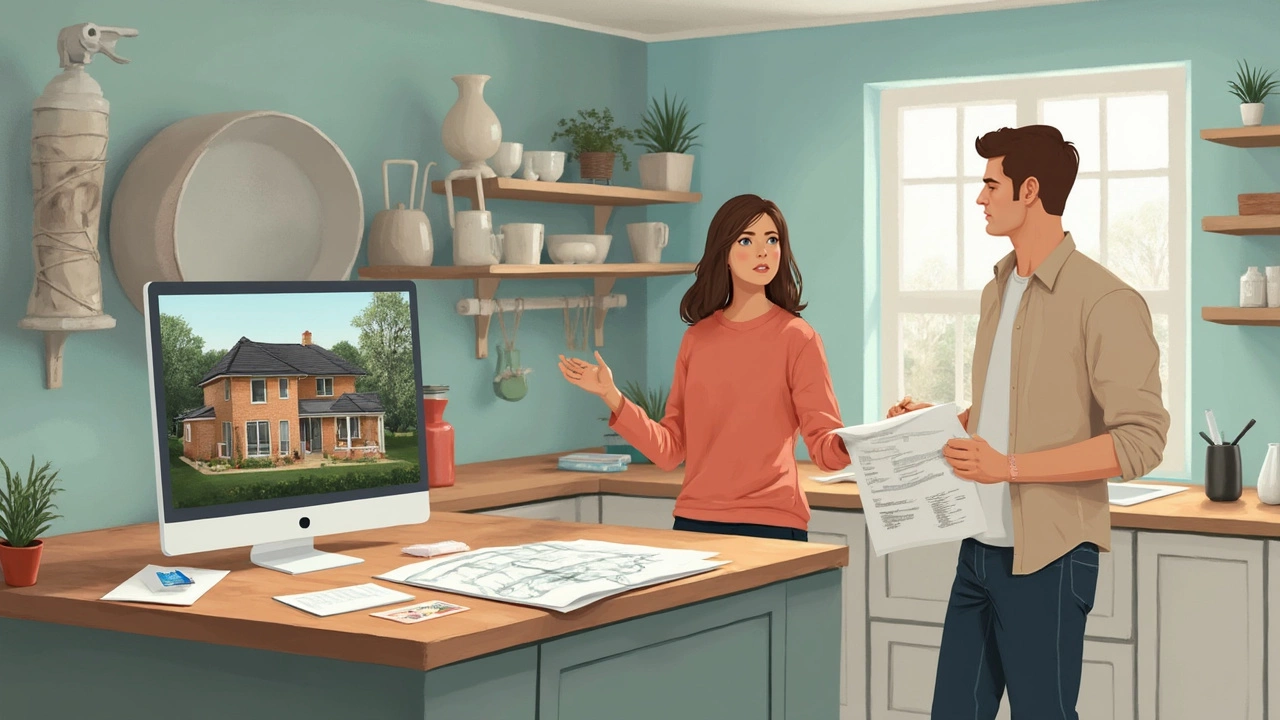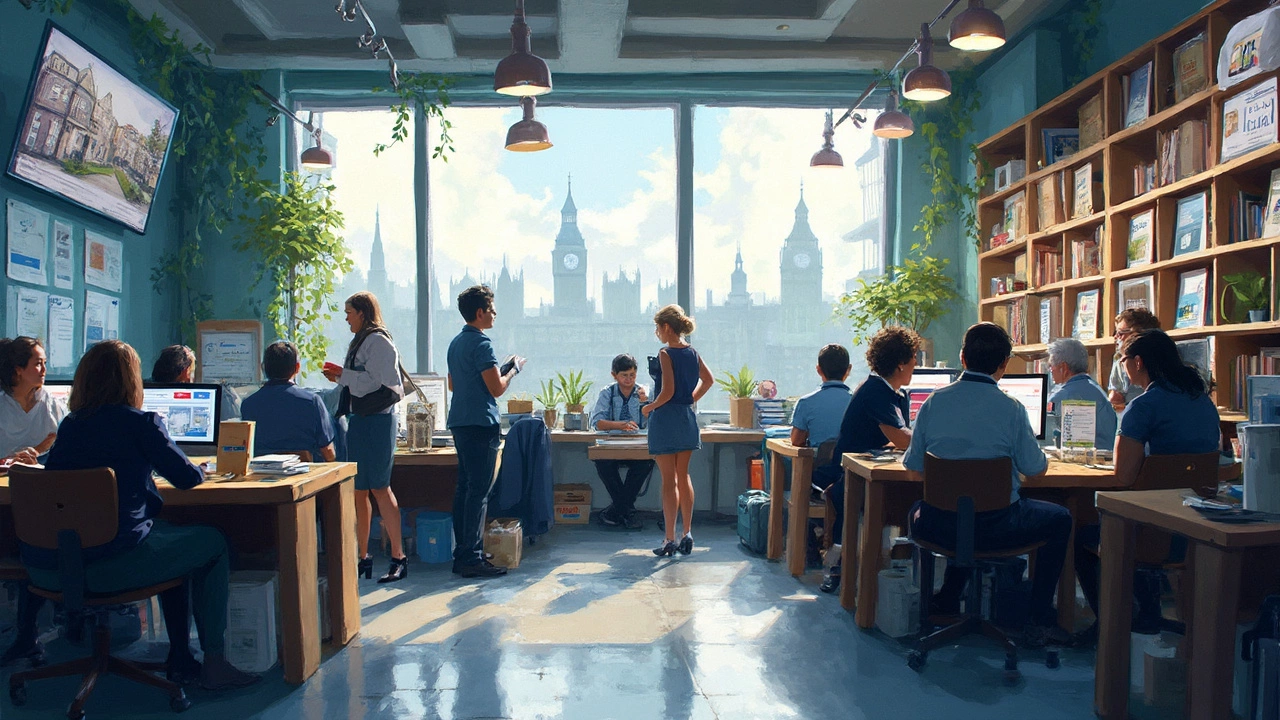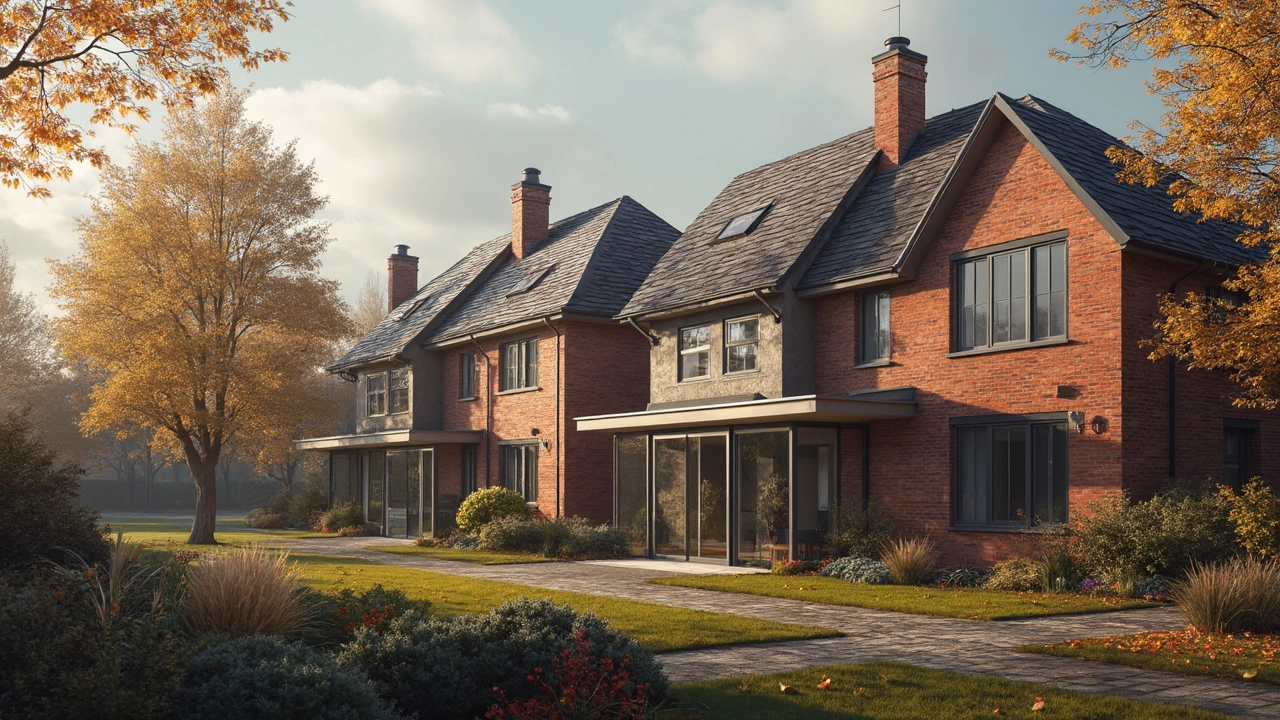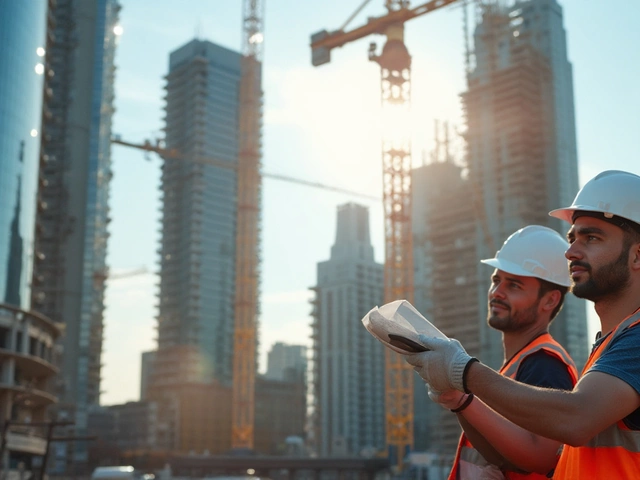Thinking about whether to build your own place or snag one off the market? You're not alone. In 2025, prices and market trends are still on a wild ride. Stuff like material costs and financing options can really tip the scales one way or the other. It’s not just about those upfront numbers, but what happens after the dust settles—literally and figuratively.
So, what's actually going on? Building sounds adventurous, right? You get to pick everything, from the floor layout to the doorknobs. But is it worth it compared to just buying something already standing? We've got you covered with all the nitty-gritty you need to consider before grabbing that hard hat or the new keys.
- Understanding the Costs: Build vs. Buy
- The Perks of Personalization
- Navigating Current Market Trends
- Financing Your Dream Home
- Avoiding Common Pitfalls
Understanding the Costs: Build vs. Buy
When you're exploring if you should build or buy a house in 2025, the costs are crucial. So what are we looking at right now? Building your own home might seem like a ticket to personalization, but it isn’t always the cheapest option.
Let's break down the numbers. The average cost of building a house, according to recent reports, sits around £250,000 to £300,000 in the UK, depending on location and materials. On the flip side, buying a pre-existing home might range from £200,000 to £250,000, but this varies drastically based on the area. It’s clear; the costs can overlap, making it less about the money and more about the value.
When you build, you have control over the quality and energy efficiency of your home. Fancy insulated walls or high-tech solar panels? You got it. But, bear in mind, the costs of building materials have been on an upward trend. This especially applies to essentials like lumber and steel, partly due to global supply chain hiccups since 2020.
In contrast, buying an existing home means you might face renovation costs to meet your needs or tastes—think about that kitchen upgrade or a fresh coat of paint. Plus, let’s not forget those sneaky maintenance costs down the line. For homes that are a decade old or more, these can rack up quite a bit.
Here's a little nugget on materials: A typical new build requires at least 16,000 bricks. The cost of a single brick has surged up to 60 pence in some regions. Do the math, and brick alone can set you back nearly £9,600! See how these little things add up?
| Cost Element | Build | Buy |
|---|---|---|
| Base Price | £250k-£300k | £200k-£250k |
| Customization | High | Low |
| Renovations | Depends | Often Needed |
| Maintenance | Lower Initial | Varies |
Ultimately, deciding whether to build or buy isn’t just about the dollars and pounds. It's a dance between control, readiness, and long-term value. Either way, staying informed and realistic about costs will help you make a decision that's right for you and your wallet.
The Perks of Personalization
When you build a home from scratch, you're not just laying bricks and mortar. You're crafting a space that reflects your personality and meets your exact needs. Want an open kitchen? Prefer your bedroom to catch the sunrise? No problem. From the get-go, your vision leads the way.
One of the biggest perks is flexibility. When you build, you choose more than just paint colors. It's about picking materials that fit your lifestyle and budget. Whether you fancy eco-friendly options or state-of-the-art smart home tech, it's up to you. These choices can also impact future savings. For instance, energy-efficient setups can lighten your utilities down the line.
Here's the kicker: personalizing can sometimes save you from future renovations. Imagine avoiding the headache of ripping out old carpets or repainting mismatched walls. It's a fresh canvas from day one. While the initial costs might seem steep, consider the long-term benefits and the value of having everything exactly the way you want it.
Some folks worry personalization leads to decision overload. To handle this, working with a seasoned contractor or an architect can help guide choices without overwhelming you. They'll often have insights on current design trends and cost-saving tips.
The space around your home also benefits from customization. Want a garden, a patio, or maybe room for a future pool? Building new allows you to make those dreams a reality and cater them to personal preferences or future plans.
Ultimately, the decision to build is about more than just the cost. It's about creating a personalized space that feels like home from the moment you walk in. If customized perfection is what you're after, building might just be the way to go.

Navigating Current Market Trends
Want to get a handle on today's housing market? It's like a whirlwind with a mix of ups and downs. Knowing these market gyrations can save your wallet and sanity whether you choose to build or buy.
First, let’s chat about real estate 2025. Home prices have climbed roughly 5% in the past year due to ongoing demand. While many expect growth to slow, the need for housing isn't disappearing anytime soon. Urban areas are still pricey, which may push some toward building further out in the 'burbs or in more rural spots.
Another major player here is construction material costs. They've been fluctuating massively. Thanks to everything from global supply chain hiccups to new environmental regulations, the prices for steel and lumber aren't as predictable as we'd like. It's like playing the stock market without a safety net. But, on the bright side, greener building options are gradually becoming more affordable as tech advances.
Interest rates are another key factor. The banks have tweaked things recently, which could impact your financing. Locking in a lower rate can make a huge difference over time, especially when you think long term. Keep an eye on these rates like a hawk because they can change on a dime.
| Trend | Current Status |
|---|---|
| Home Prices | Up by 5% |
| Material Costs | Fluctuating |
| Interest Rates | Variable |
This market is a bit like a juggling act. You’ve got to keep an eye on multiple things simultaneously. But, understanding the dance of housing market trends gives you a leg up when deciding to build or buy. Stay informed, flexible, and ready to adapt as these trends evolve.
Financing Your Dream Home
Financing a dream home can feel like a puzzle, especially when deciding between building or buying. Each path has its own set of financial hoops to jump through, but knowing the ropes can make it easier.
If you're leaning towards building, you might look at getting a construction loan. These loans are typically short-term and cover all building costs until your home's ready. These usually convert into a regular mortgage once building's done. Here's a tip: not every lender offers them, so shop around to find one that does, and compare their rates and terms.
When buying an existing house, you'll likely deal with a traditional mortgage. This can feel more straightforward, as you have a concrete number to work with once the deal's set. The thing is, the current interest rate landscape in 2025 can dramatically impact your final costs, so staying updated on rate trends is a good move.
Here's something crucial: always have an eye on your credit score. It's your golden ticket to better interest rates regardless of the path you choose. Higher scores mean lenders see you as less of a risk, which often knocks down the interest on your loan.
Another helpful tip is to set a realistic budget. Consider not just the cost of land or the purchase price but also additional costs such as permits, utilities, and possible landscaping. It’s easy to get caught in the excitement, but grounding yourself with a solid budget keeps surprises at bay.
Here’s a little trick: state incentives or grants might be available for new builds or first-time buyers. They can lighten the load a bit and are worth checking out with possibly some free funds headed your way!
Gathering all the financial ducks in a row might seem daunting, but being prepared makes all the difference. Armed with the right info, you're closer to cracking the code of financing your dream home.

Avoiding Common Pitfalls
Jumping into building or buying a house might seem like an epic adventure, but let's be real—it's easy to trip over some tricky obstacles. From unexpected costs to timeline hiccups, there's a lot that can sneak up on you if you're not careful.
First off, budget overruns are a huge deal. Whether you're buying an existing home or constructing a new one, costs can spiral out of control before you know it. Get this: A lot of folks end up spending 10-20% more than they planned. Why? Hidden fees, anyone? These can pop up at any stage and sting worse than a surprise rainstorm during a picnic.
Then there's the timeline. Don't assume everything will go off without a hitch. Delays can happen because of permit issues, weather, or even contractor schedules. As one seasoned builder notes,
"If you fail to plan, you plan to fail—especially when it comes to construction timelines."Give yourself some buffer time to breathe easier.
Checking out the quality of your materials is another biggie. Keep an eye on the market for home building costs and ensure you're not skimping on something critical. It's like buying cheap tyres for your car—sure, you save a few quid now, but it'll cost you more down the line.
Here's a quick list of things to watch out for to make sure you stay on the right track:
- Stick to your budget like glue. Track every expense, no matter how small it seems.
- Double-check contractor credentials and previous work. Don’t just hire based on price alone.
- Understand local zoning laws. They can halt your project quicker than you can say "Oops."
- Get everything in writing—contracts, deadlines, and deliverables. Trust me, your future self will thank you.
Ultimately, knowledge is power. The more you know about potential pitfalls and how to dodge them, the smoother your journey will be. Whether you decide to build or buy, doing your homework now saves heaps of hassle later.





